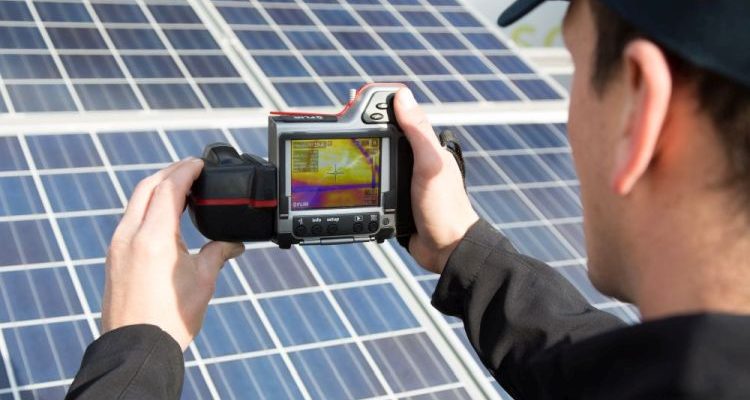Photovoltaic Monitoring Will Help Detect Damages Early
By evaluating live data from the PV system and comparing it with forecasted yields, a photovoltaic monitoring system can be upgraded to an early warning system. In this article, you will find out how to secure your yields with professional monitoring.
Why You Need Photovoltaic Monitoring
The earlier technical problems are identified and resolved, the lower the short- and long-term yield deficits will be. As an operator, photovoltaic monitoring and maintenance results are available to you as sources of information.
In order to detect subtle yield losses early enough, you first need to know the actual yield potential of your photovoltaic system. To do so, you will have to compare the current yield of your system to the forecasted yields. Make sure that the target yields are adjusted to the actual irradiation conditions in the relevant period, and ask an independent yield expert to help you in the matter.
In case of a big difference in the results, you will need to carry out more in-depth research into the potential problems. Comprehensive photovoltaic monitoring systems can identify some errors remotely or at least localize them. They also send error messages in the event of acute faults. This can be supplemented by on-site inspections and measurements on the modules for instance, such as thermography or recording the module specific characteristics.
Different causes for declining yields
A photovoltaic system’s yields can decrease slowly or drop abruptly. Some typical reasons for this are the following:
- damaged components (the modules themselves, or the cables, inverters, etc),
- improper handling of components,
- incorrect installations,
- poor gardening around the system,
- contamination degree of the modules,
- inadequate maintenance.
Risks due to loss of yields
Three main risks can be drawn for the loss of yield:
Financing: if the returns are lower than assumed in the financial model, it may jeopardize a potential re-financing.
Guarantees: If defects in components are detected too late, warranty claims and guarantees may expire and be forfeited. This means that you will have to pay for the replacement or repair of the components yourself.
Safety risks: A defective installation can endanger the safety of the areas surrounding the system.
Comprehensive photovoltaic monitoring
Professional monitoring systems include a detailed remote monitoring with intelligent fault detection, and automatically alert you or technical operators as soon as something happens. Good monitoring systems provide a digital monitoring portal through which the plant can be evaluated in detail from a distance.
With this type of technology, in the case of a ground-mounted PV system for instance, you can detect if there are string failures or if the maintenance of green areas around it is needed. Should the vegetation shade the modules, you could recognize this by the reduced yields of individual strings (strands).
If you want to get even more precision when assessing your system performance, you can equip it with sensor technology. The following sensors are recommended:
- Irradiation sensors: they detect the irradiation on an inclined or horizontal module, depending on the installation,
- Pyranometers: they are especially useful for larger systems if you are looking for an even more accurate capture the radiation on the module or the horizontal level,
- Inverter and meter data: they provide the most accurate and detailed recording of yield data possible,
- Weather stations or temperature sensors: they measure the temperature of the module as well as its surroundings (can be used as a complement).
Refine benchmarking
The significance of performance comparisons depends on the quality of the comparative values. Yield forecasts, for example, which were made by the plant constructor before the plant was built, may have been calculated optimistically rather than conservatively for sales purposes.
You have several options on how to optimize your benchmarks:
Yield reports
You can have a yield report prepared by a photovoltaic expert who is independent of the plant manufacturer. This includes precise weather data as well as a simulation of the system, which takes into account the system configuration (e.g. module layout, wiring, inverters and transformers) and site-specific conditions (e.g. shading situation, potential snow, etc). As a result, you will receive a detailed report explaining all the loss factors, as well as realistic forecasts for the specific yield and performance ratio. That way, you will know the real yield potential of your system.
Evaluation of the system yield
Photovoltaic experts compare the actual yield with the targeted yield. As already mentioned, the expected yield (see yield expertises (earnings report)) is usually corrected by the actual irradiation. Here, you can either carry out simulations, or used calculation methods (that have previously been contractually agreed on). This works best with live data: install sensors and use a monitoring system that can process them.
Implementation
A cost-benefit analysis shows whether it is worth investing in a photovoltaic monitoring system, sensor technology or yield assessment. The greater the system performance, the more serious the technical errors are, and the more difficult it is to research the causes on site.
It is then precisely in this moment that remote monitoring facilitates on-site investigations and reduces the corresponding effort. The photovoltaic monitoring should be designed in a smart interaction with the maintenance, and fit the system accordingly.
This article was created with the kind support of Matthias Hadamscheck, Head of Technical Consulting, meteocontrol GmbH.
Image source: ADLER Solar Services





